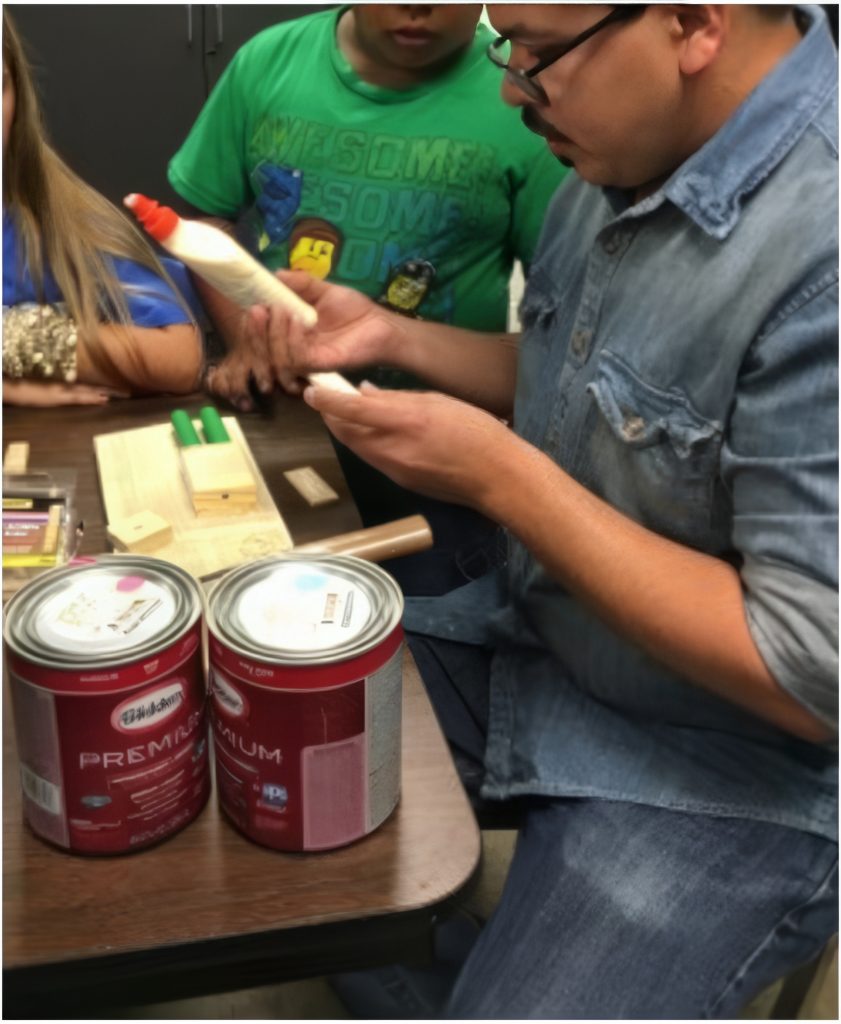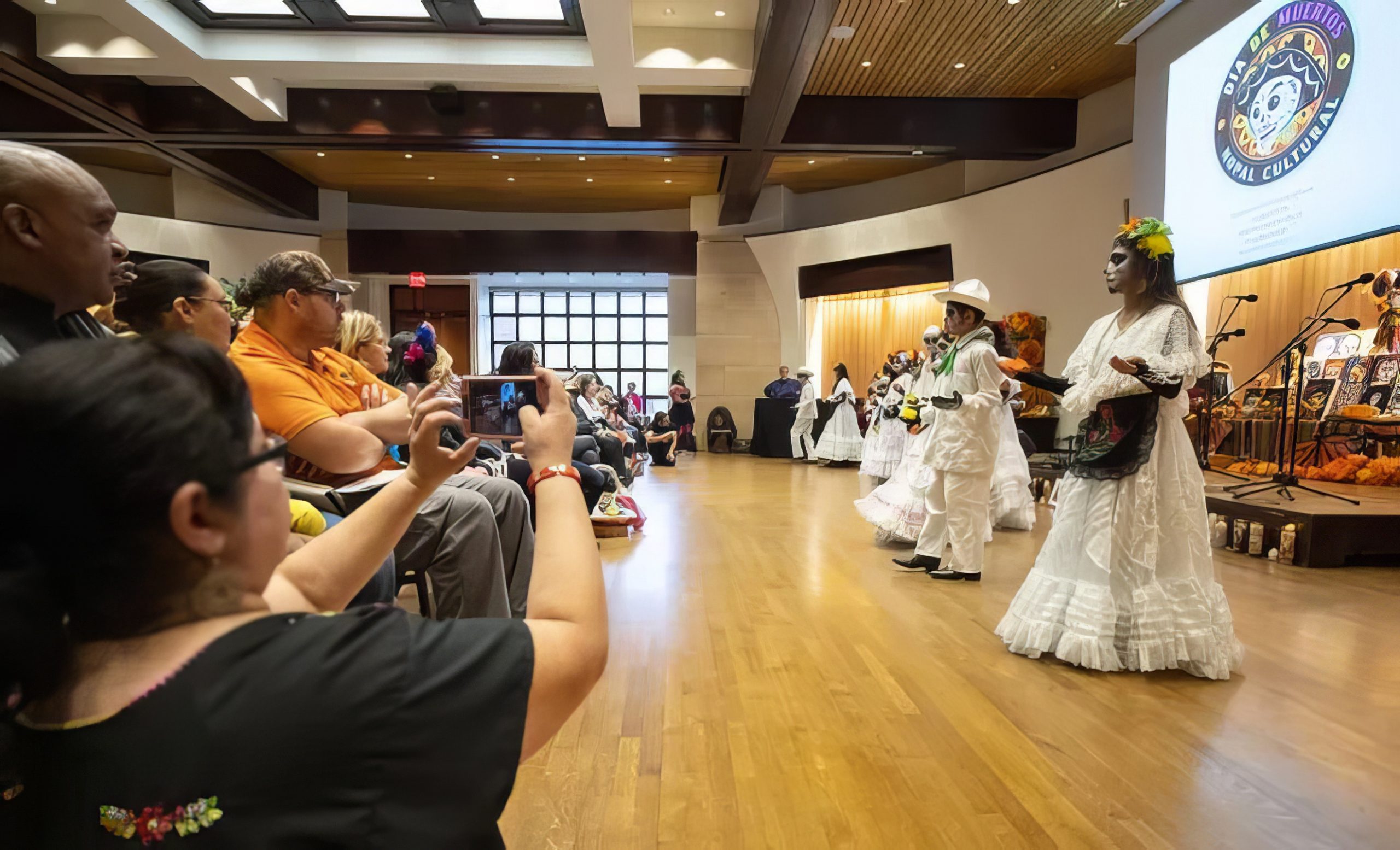NOPAL Cultural, formerly known as NOPAL Cultural Center is a Latino grassroots and volunteer-operated organization that began in December 2012. The acronym NOPAL stands for Nido Organizado Para Arte Latinoamericano (Organized Nest for Latin American Art). As a multicultural organization, it seeks to enhance Latin-American art in Indianapolis.

NOPAL Cultural’s founding members Daniel Del Real and Eduardo Luna met in early 2012. Del Real, an artist, was a founding member and curator at Two-Thirds Studio (2010-2015) in the located in . In 2012, he curated the show titled, Herencia: The New Latino Identity/La Nuevo Imagen Latino. Eduardo Luna, local Mp3 E.J./D.J. (electronic jockey/disc jockey), music promoter, and then AmeriCorps member at , brought Del Real and this show to Big Car’s Service Center for Contemporary Culture and Community located in the neighborhood. A short time later, the two officially formed NOPAL Cultural Center. The pair collaborated to establish the Center’s mission and the scope of its first show.
NOPAL’s first show, Al Sur de la Frontera (South of the Border) debuted in the second-floor gallery at the on February 2, 2013. Del Real curated the show that featured both Latino and non-Latino artists and centered around Latino culture. Luna provided the evening entertainment dressed as his masked alter-persona luchador (wrestler) El Camarón Electrónico.
Indianapolis museum professional Nicole Martinez-LeGrand became the third principal of NOPAL Cultural Center after attending Al Sur de la Frontera. Del Real, Luna, and Martinez-LeGrand planned their first Dia de Muertos (Day of the Dead) event at Studio B Gallery in the Argyle Building on on November 2, 2013. This event featured ofrendas, altars to commemorate the deceased configured inside a small crate, artwork, spoken word performances, and musicians. The event featured a Catrina Runway show (parade) featuring models in contemporary clothing, carrying bags designed by Venezuelan artist Mary Mindiola, and wearing Catrina make-up (sugar skull makeup used to celebrate the dead). A choreographed procession of a bride and groom ended the day.

In 2014, NOPAL Cultural Center partnered with the to expand the museum’s existing annual Dia de Muertos programming from a one-day family event, held on the last Saturday of October to a to a month-long celebration. The museum dedicated a small gallery to exhibit six collapsible 8-foot tall double-sided ofrendas that Del Real designed and fabricated and that community groups and organizations decorated. Family day included activities such as musical and vocal performances, and Ballet Folclorico dance performances. Additional activities included a mercado (market) of local artisans who sold their Dia de Muertos inspired work. The event ended with the Catrina parade, which featured a procession of more traditionally clad brides and grooms, children, and Catrines (male Catrinas), set to the Rocío Dúrcal song Amor Eterno.
In 2015, NOPAL Cultural Center changed its name to NOPAL Cultural. In April 2016, NOPAL Cultural collaborated with , founder of the to develop cultural programming to celebrate the culture and diversity in four westside neighborhoods: , , , and . NOPAL Cultural and numerous other partners worked with Fonseca to bring a Mobile Cultural Center to the four neighborhoods as a way to accommodate exhibitions, classes/seminars, and other non-performance-based events. Del Real worked in the Hawthorne neighborhood, which skews as majority Caucasian, to introduce neighborhood children to the work of the Latino artist Joaquin Torres Garcia.
At the end of 2016, Del Real left NOPAL Cultural to pursue other projects. Luna and Martinez-LeGrand continued their Dia de Muertos show and family day collaboration with the Eiteljorg, with an enhanced parade where each Catrina or Catrine recited a self-composed calavera poem, a satirical poem that makes jest of the living.
In December 2018, Martinez-LeGrand departed NOPAL Cultural, leaving Luna at the helm of the organization. Two years later, Luna established Arte Mexicano en Indiana, an arts nonprofit whose mission is to encourage and promote Mexican art, music, and culture in Indiana through collaboration, organization, and promotion of public events. The organization absorbed NOPAL Cultural into its fold. NOPAL Cultural continues to exist as a community partner and artist curator for the Eiteljorg Museum of American Indians and Western Art for its annual Dia de Muertos event.

Help improve this entry
Contribute information, offer corrections, suggest images.
You can also recommend new entries related to this topic.
